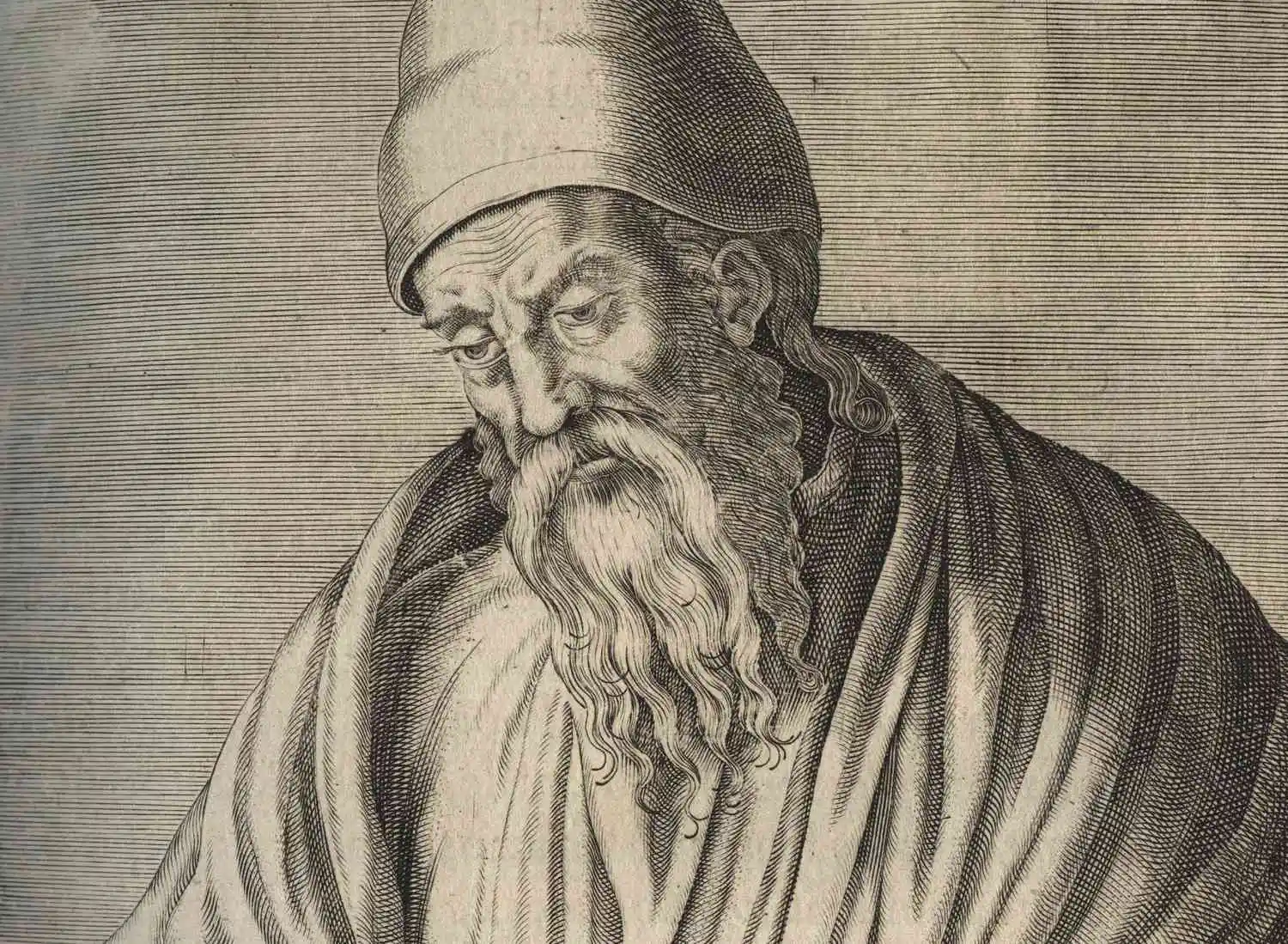Hey there, math enthusiasts! Ever wondered about the mastermind behind the geometry we study? Buckle up as we journey into the captivating world of Euclid, the “Father of Geometry.” We’ll uncover secrets from his groundbreaking work, “Elements,” explore lesser-known facts about his life, and discover how his genius continues to shape our world.
Fun Facts About Euclid
This ancient Greek scholar wasn’t just good with numbers – he practically wrote the rulebook on them! Legend has it that Euclid’s passion for knowledge was evident from a young age, leaving even his teachers astounded by his insightful questions.
His magnum opus, “Elements,” became the ultimate geometry bible for over two millennia. This wasn’t just any book; it laid down the fundamental principles of geometry in a way so clear and logical that it captivated generations.
Euclid’s brilliance lay in his ability to simplify complex ideas. He believed that everyone, not just the elite, could understand geometry. He started with basic concepts, like “a line can be drawn between any two points,” and built upon them to unravel mind-blowing theorems.
But Euclid’s influence extended far beyond shapes and angles. His work on light and stars set the stage for groundbreaking discoveries in astronomy and physics, showcasing the ripple effect of his genius.
Intriguingly, despite his immense influence, Euclid remains an enigma. We have very little information about his personal life, making him one of history’s most intriguing figures. It seems some geniuses prefer their work to speak for itself.
To learn more about Euclid, the revered mathematician, and discover his intriguing life and contributions, be sure to explore our comprehensive article on interesting facts about Euclid.
Euclid’s Elements: The Cornerstone of Geometry
Euclid’s Elements is more than just a dusty old math book. It’s a blueprint for understanding shapes and space that has been relevant for over two thousand years! The brilliance of Elements lies in Euclid’s pioneering use of deductive reasoning. Instead of merely stating geometric principles, he started with simple, self-evident truths (axioms) and used logic to construct a system of proofs and theorems.
While most people associate Elements with the Pythagorean theorem (a² + b² = c²), Euclid’s work went far beyond triangles. He delved into number theory, exploring concepts like the greatest common divisor. He even developed an algorithm for finding it that we still use today! Euclid was also fascinated by prime numbers and theorized about their infinite nature.
Though Elements is known for its rigorous proofs, it served as the geometry textbook for centuries. Its structured approach, starting with the basics and progressing to complex ideas, laid the foundation for how we teach and learn math today.
But Euclid’s impact transcends textbooks. His work on numbers in Elements sparked numerous mathematical discoveries. Mathematicians continue to explore connections he made between shapes and numbers, such as the concept of perfect numbers. It’s no wonder he’s hailed as the “Father of Geometry” – his work continues to inspire mathematical thought even after thousands of years.
Surprising Facts About Euclid’s Life and Work
While Euclid’s legacy rests firmly on his geometric achievements, there’s more to this enigmatic figure than meets the eye.
Key Takeaways:
- Euclid was not just a mathematician; he was also a philosopher and astronomer.
- Euclid’s work has practical applications in engineering, physics, and computer science.
Here are some intriguing, lesser-known facts about Euclid:
- A Man of Many Talents: Euclid’s brilliance wasn’t confined to mathematics. He delved into philosophy and astronomy, exploring areas like ethics, logic, and even developing a model of the solar system that endured for centuries.
- The Mystery of the Missing First Name: “Euclid” was a common name in ancient Greece. His first name remains unknown, adding to the air of mystery surrounding his life.
- Building on the Shoulders of Giants: Euclid didn’t develop his groundbreaking ideas in isolation. Elements represents a culmination of knowledge from mathematicians who preceded him. He meticulously collected, organized, and systematized their collective wisdom.
- Lost in Translation: Elements wasn’t initially written in the standard Greek we associate with philosophers like Plato. It was first written in Doric Greek, a regional dialect, and later translated into the more widely used Attic Greek, ensuring its survival and impact throughout history.
- More Than a Textbook: While we mainly view Elements as a geometry textbook today, in Euclid’s time, it served as a comprehensive collection of mathematical knowledge and geometric principles. It wasn’t until the 19th century that it became a standard textbook, shaping generations of mathematicians.
- A Legacy That Endures: Euclid’s Elements remains a cornerstone of mathematical education. It stands as a testament to the enduring power of his work and the timelessness of fundamental mathematical principles.
Euclid’s Enduring Legacy in Math and Beyond
Euclid’s influence extends far beyond the realm of geometry. Elements not only established the rules of geometry but also revolutionized logical thinking. By introducing the concept of starting with basic axioms and building upon them with rigorous proofs, he provided a framework for understanding the world that continues to shape our thinking today.
His emphasis on clear, logical arguments deeply influenced philosophers. Scientists, too, found inspiration in his systematic approach, which paved the way for the scientific method we use today. The idea that we can break down complex phenomena into smaller, provable parts is a testament to Euclid’s enduring impact.
For centuries, Elements has been the quintessential textbook for learning geometry, influencing countless individuals. Even today, it remains a foundational text, reminding us of the power of rigorous thought and logical reasoning. Euclid’s legacy lives on, inspiring mathematicians, engineers, and scientists to explore, question, and build upon the foundations he laid millennia ago.
- Unlock Water’s Symbolism: A Cross-Cultural Exploration - April 20, 2025
- Identify Black and White Snakes: Venomous or Harmless? - April 20, 2025
- Unlocking Potential: Origins High School’s NYC Story - April 20, 2025
















Comments are closed.